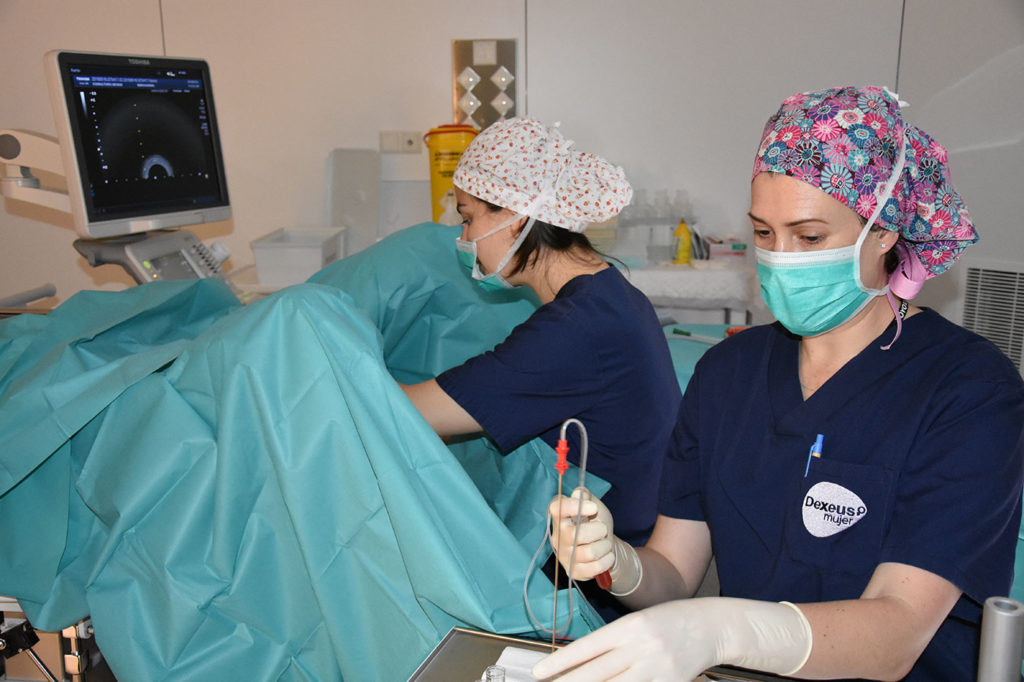
The fact that women with hyperandrogenism present an increased number of antral follicles suggests a role of androgens in follicular development. Clinical examples of this effect are polycystic ovary syndrome (PCOS) and patients with congenital adrenal hyperplasia. Also, androgen levels in the blood decrease significantly with age. This finding has been indicated as one of those responsible for reproductive ageing and has been the rationale for pretreatment with androgens in patients with decreased ovarian reserve, with the intention of improving their reproductive results. However, the results are not conclusive. Therefore, a group of researchers from various centres, including Ana Neves, from Dexeus Mujer, has carried out a review of the scientific literature to analyse the impact of androgen supplementation on follicular development, as well as the weak points of currently existing clinical studies.
The researchers indicate that both the variability in the dose of testosterone supplementation and in the duration of the treatments that have been carried out in clinical trials could be factors that do not allow obtaining clear evidence. Likewise, the heterogeneity in relation to the definition of a low ovarian reserve and the inclusion criteria of patients and the multiplicity of protocols followed in the various trials could be other factors that make it difficult to obtain clarifying results.
The authors conclude that, despite the large amount of literature available on the use of androgens in patients with low ovarian reserve, most of the evidence is still limited to draw definitive conclusions. Rather than review the available data and publish new studies based on the same pitfalls, they urge a restart of this chapter with well-designed clinical trials. In this sense, the TTRANSPORTtrial (Testosterone TRANSdermal gel for Poor Ovarian Responders Trial), a multicentric randomized clinical trial, in which Dexeus Mujer participates, has been launched. The objective of this trial is to assess whether the administration of testosterone before starting ovarian stimulation, through a gel applied directly to the skin, can improve the response in women with low ovarian reserve. For the first time, a protocol has been designed according to the principles of the physiology of folliculogenesis, with an androgen treatment duration of approximately 2 months, and according to the principles of pharmacokinetics, using testosterone, the most validated androgen in animal studies, in doses that increase its concentration in the blood to physiological levels. Preliminary results of this study are expected to be available in 2022.
Reference article:
The Role of Androgen Supplementation in Women With Diminished Ovarian Reserve: Time to Randomize, Not Meta-Analyze
Ana Raquel Neves, Pedro Montoya-Botero and Nikolaos P. Polyzos
Front Endocrinol (Lausanne) 2021 May 17;12:653857. doi: 10.3389/fendo.2021.653857. eCollection 2021.doi: 10.3389/fendo.2021.653857.
DEXEUS CAMPUS
Gran Vía de Carles III 71-75
08028 Barcelona
campus@dexeus.com
(+34) 93 227 47 09
® Copyright 2021-2025 Dexeus Mujer Foundation – Gran Via Carles III 71-75. 08028 Barcelona. Spain
| Cookie | Duration | Description |
|---|---|---|
| cookielawinfo-checkbox-analytics | This cookie is set by the GDPR cookie consent plugin. The cookie is used to store the user's consent for cookies in the "Analytics" category. | |
| cookielawinfo-checkbox-functional | The cookie is set by the GDPR cookie consent to record user consent for cookies in the "Functional" category. | |
| cookielawinfo-checkbox-necessary | This cookie is set by the GDPR cookie consent plugin. Cookies are used to store the user's consent for cookies in the "Necessary" category. | |
| cookielawinfo-checkbox-others | This cookie is used by the GDPR component. It is used to store the user consenting cookies in the "Other" category. | |
| cookielawinfo-checkbox-performance | This cookie is set by the GDPR cookie consent plugin. The cookie is used to store the user's consent for cookies in the "Performance" category. | |
| elementor | ||
| viewed_cookie_policy | The cookie is set by the GDPR cookie consent plugin and is used to store whether or not the user has consented to the use of cookies. It does not store any personal data. |
| Cookie | Duration | Description |
|---|---|---|
| _icl_visitor_lang_js | To allow multi-language functionality for web content. | |
| wpml_browser_redirect_test | Used to verify if cookies are allowed in the browser. |
| Cookie | Duration | Description |
|---|---|---|
| _ga | The _ga cookie, installed by Google Analytics, calculates visitor, session and campaign data and also tracks site usage for the site's analytics report. The cookie stores information anonymously and assigns a randomly generated number to recognize unique visitors. The _ga cookie, installed by Google Analytics, calculates visitor, session and campaign data and also tracks site usage for the site's analytics report. The cookie stores information anonymously and assigns a randomly generated number to recognize unique visitors. | |
| _ga_1WD9MFDMJK | This cookie is installed by Google Analytics. |
| Cookie | Duration | Description |
|---|---|---|
| wp-wpml_current_language | Necessary for the operation of the website in the different languages |